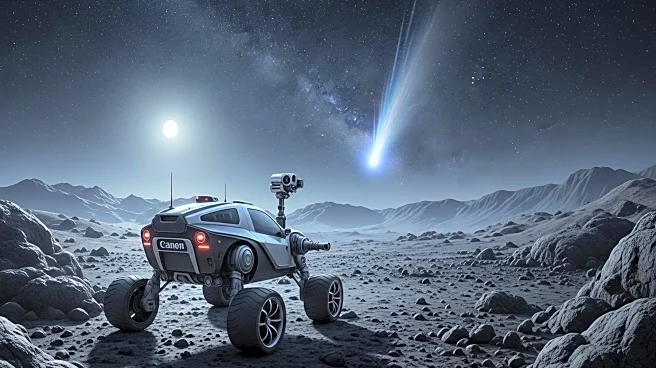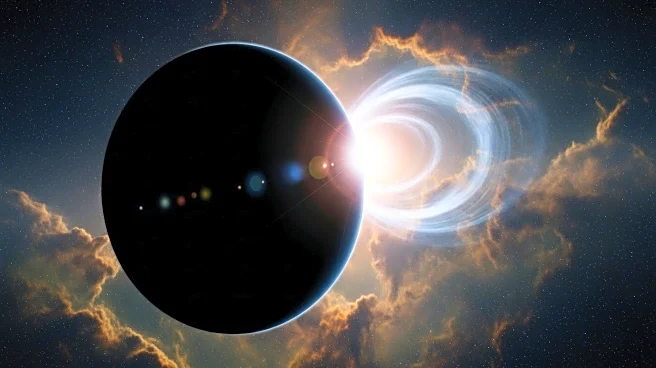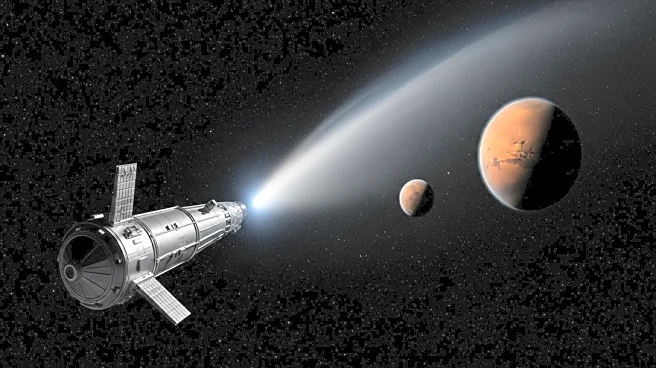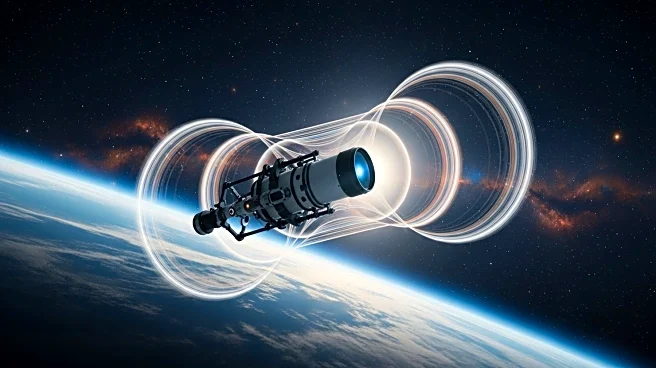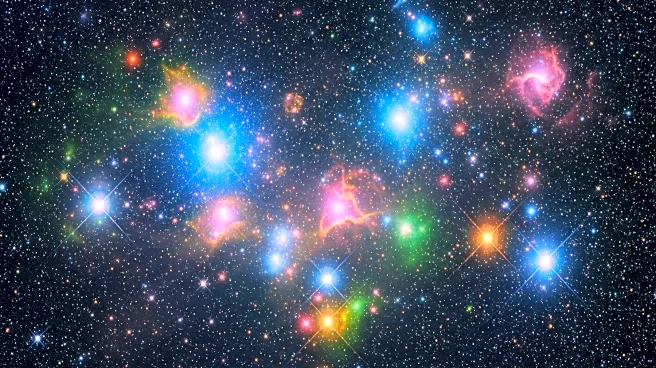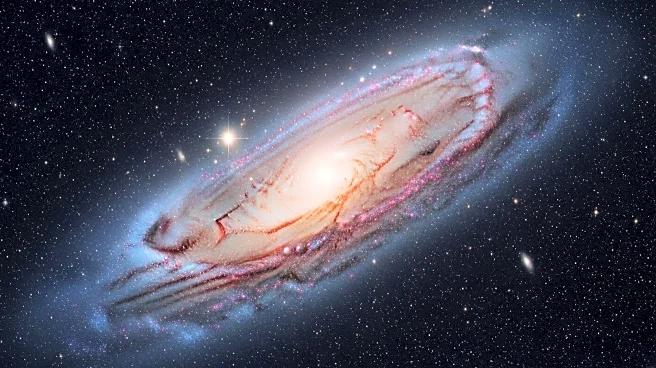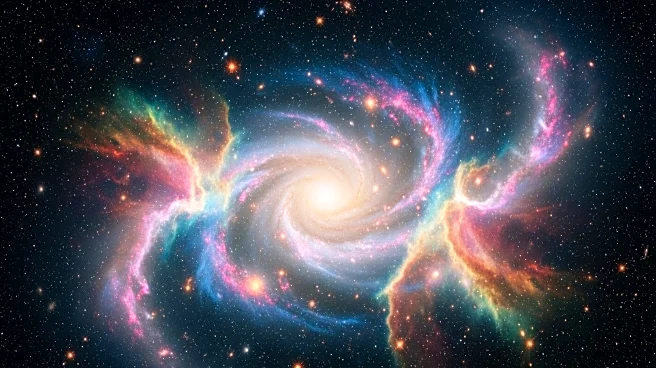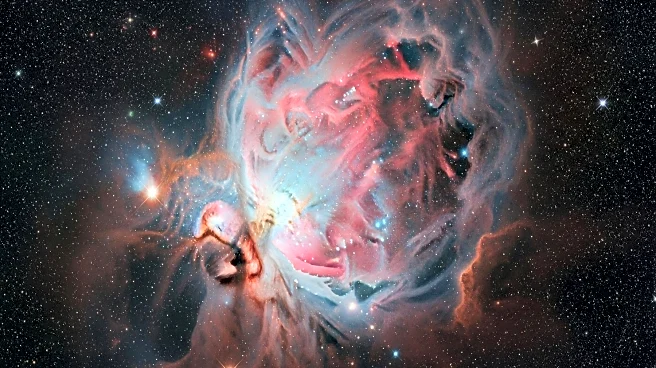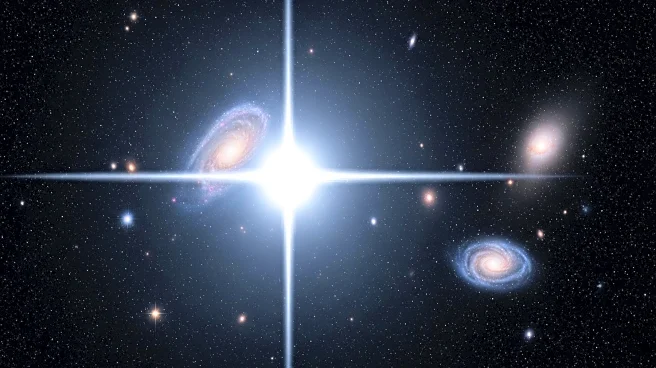What's Happening?
The James Webb Space Telescope (JWST) has successfully identified a red supergiant star just before it exploded into a supernova, marking a significant milestone in astronomical research. This discovery was made possible through JWST's powerful infrared capabilities, which allowed researchers to detect the star despite it being cloaked in dust. The star, known as SN 2025pht, was located in a galaxy approximately 40 million light-years from Earth. Prior observations by both JWST and the Hubble Space Telescope had captured images of the region before the explosion, enabling astronomers to pinpoint the progenitor star. The findings suggest that many red supergiants may explode but remain hidden behind thick dust layers, which obscure them from optical telescopes.
Why It's Important?
This discovery is crucial for understanding the life cycles of massive stars and the processes leading to supernovae. Red supergiants are predicted to be common progenitors of core-collapse supernovae, yet they have been rarely observed in pre-explosion images due to dust obscuration. The ability of JWST to penetrate these dust layers and provide detailed infrared data opens new avenues for studying these stars. This could lead to more accurate models of stellar evolution and supernova mechanisms, impacting fields such as astrophysics and cosmology. The discovery also highlights the potential of upcoming telescopes like the Nancy Grace Roman Space Telescope to further explore these phenomena.
What's Next?
With the capabilities of JWST and future telescopes, astronomers anticipate tracking more red supergiants in their final stages, potentially solving longstanding mysteries about their life cycles. The discovery of SN 2025pht suggests that many supernovae may have been more luminous than previously thought, as they were obscured by dust. Researchers will continue to study the chemical composition of the dust surrounding these stars, which may provide insights into their internal processes. The findings could lead to a reevaluation of supernova progenitor models and enhance our understanding of stellar evolution.
Beyond the Headlines
The discovery of SN 2025pht not only solves a mystery about red supergiants but also raises questions about the role of dust in stellar evolution. The unusual carbon-rich dust found around the progenitor star suggests complex internal processes that may alter a star's chemistry before it explodes. This could have implications for the study of cosmic dust and its impact on the visibility and characteristics of celestial objects. The ability to detect such stars before they explode may also improve predictions of supernova events, which are crucial for understanding the dynamics of galaxies.

